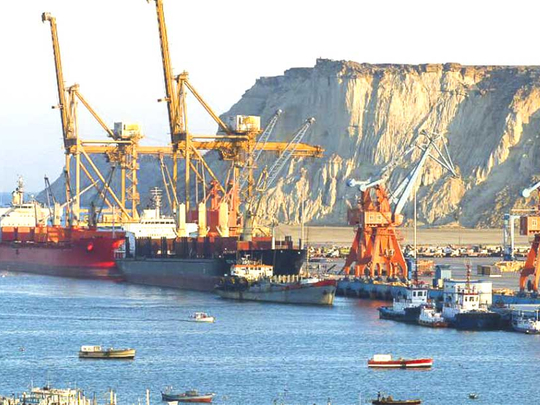
The China-Pakistan Economic Corridor (CPEC) should help lift Pakistan’s economic output. It connects western China with Gwadar port on Pakistan’s southern coastline in Balochistan province. Along the Corridor route, the plan envisages connectivity through road and rail networks, power production units and Special Economic Zones (SEZ’s). CPEC, among all the BRI land and sea corridors will set the tone for others. That is why China is going full steam to see the project completion, in three phases by 2030. Involving only one country — Pakistan, the CPEC provides China with direct access to the Indian Ocean. The route shortens western China’s distance to the Arabian Sea from 13,000km to just 3,000 and cuts the transit time from 45 days to only 10.
Notwithstanding its grand vision and the speed at which the project has taken off the CPEC continues to face its multiple challenges. India, an early objector, sees the BRI initiative and more specifically the CPEC as China’s attempt to circle India through this connectivity. Gwadar, Indian opinion makers argue is part of the ‘string of pearls’ ports that China is aiming to control around India. The 40-year management agreement over Gwadar and lease for SEZ gives China a toehold into the Indian Ocean. And, on the global chessboard, Gwadar allows China the possibility of a naval presence close to India’s western coastline, which together with Pakistan’s antipathy will become a challenge for India.
India also objects to its route that traverses the Gilgat-Baltistan region, part of erstwhile state of Jammu and Kashmir, contested by India and Pakistan. The Americans have echoed the Indian viewpoint. Both conveniently forget that under the 1960 World Bank facilitated Indus Water Treaty, Mangla Dam is located within this contested state and both contributed money for its construction. Why object now? China has publicly reaffirmed that “[CPEC] is conducive to promoting the connectivity and shared prosperity of the whole region” and has repeatedly invited India to come on board.
Already the least connected region in the world, troubled relations within South Asia and perpetual war in Afghanistan is another challenge for full realisation of BRI/CPEC initiative. Pakistan seeks access to Central Asian markets, which Afghanistan denies in the absence of Pakistan’s agreement to allow normal Afghanistan-India land trade. However, once the rewards start flowing, estranged neighbours may hold their differences in abeyance for shared benefits.
The CPEC faces absence of trust between the federal government and Punjab on one side and Pakistan’s smaller provinces on the other. The Chinese have worked both publicly and privately to assuage the concerns of smaller provinces. Their nudge has definitely helped develop consensus on the route priority, location of power units and SEZ’s in favour of smaller provinces. With ‘early harvest’ projects on track it is important that other projects are completed on schedule by 2030. This will help stability in otherwise fractured inter-provincial relations in Pakistan.
A possible powder keg
Unrest in Pakistan’s Balochistan province, where Gwadar is located, which appeared to pose a major threat when the CPEC was launched seems to have tapered off through a well-coordinated effort led by the army. Comprising 43 per cent of the land and only 3 per cent of the population and rich in mineral resources, the Baloch people feel that their resources have been exploited by others. Their fears on being turned into a minority in the face of an influx of outsiders remain real. Pakistan will need to do more to let the Baloch assume and feel a sense of ownership of a major enterprise like CPEC in which Gwadar is the key part. Short of the Baloch people’s involvement this latent discontent will remain a possible powder keg.
The impression among Pakistan’s intelligentsia that CPEC benefits China more than Pakistan remains. Economists question the wisdom of heavy borrowings raising Pakistan’s debt to unsustainable levels. It’s a challenge to Pakistan to get its act together and draw maximum benefit from the CPEC, which will be enough to pay back and add to its GDP.
When the BRI was formally launched in 2017 there were only three significant holdovers — India, Japan and the US. The US was taken aback when some of its closest allies within Nato and the Asia-Pacific rushed to join in. The project as it is conceived and is being developed creates shared benefits from which no nation wants to be left out. The three are doing so at their own peril. In attempting to prevent the Chinese and thus the Asian Century they risk being on the wrong side of history.
Sajjad Ashraf served as an adjunct professor at the Lee Kuan Yew School of Public Policy, National University of Singapore, from 2009-2017. He was a member of Pakistan’s Foreign Service from 1973-2008 and served as Pakistan’s consul general to Dubai during the mid-1990s.












